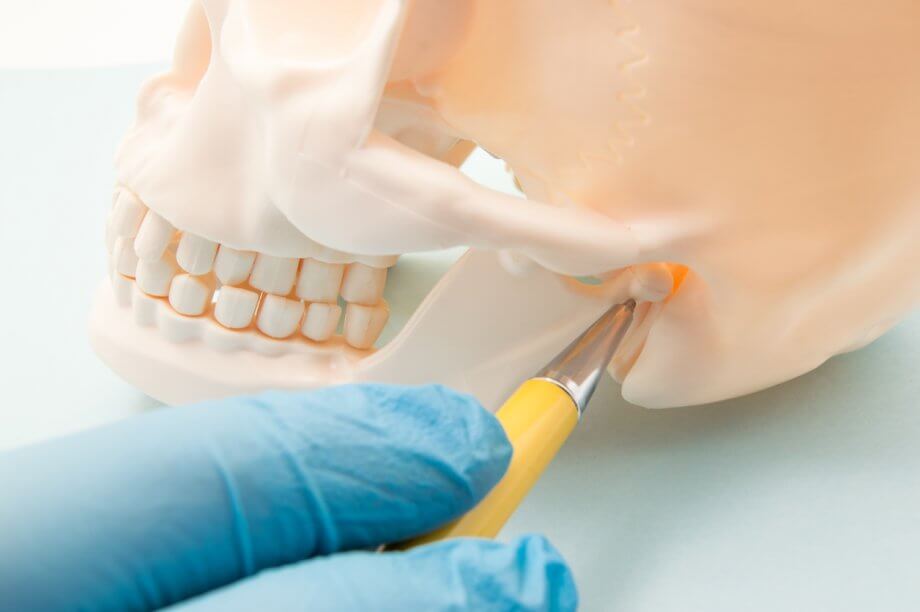When it comes to TMJ pain, you may not be sure where to go for treatment. Is it a medical issue that should be treated by your primary care provider? A neurologist because it causes headaches? It might not occur to you to consult with your dentist for TMJ treatment, but dentists have specialized training in the function of the jaw. There’s no one better to diagnose TMJ disorders and help you find a solution that works for you.
What Is TMJ Disorder?
TMJ stands for temporomandibular joint. The TMJ is the joint that connects your skull and your jawbone, acting as a sliding hinge when you open and close your mouth to eat, speak, or yawn. There’s one on each side of your head, but we rarely even notice them unless they start causing us pain.
When the TMJ causes chronic pain, it’s referred to as TMJ disorder (TMD) or TMJ syndrome. Whatever you call it, it’s tremendously painful and has a significant impact on quality of life. Even though the TMJ is a small joint, its located next to a very sensitive tissue area and any dysfunction in the joint can cause a great deal of pain. Even a small amount of pressure on the TMJ can be excruciating for people who suffer from TMD.
Symptoms of TMD Include:
- Pain in the face, jaw, and temporomandibular joints
- Malocclusion, which may eventually lead to tooth damage
- Earaches and tinnitus
- Chronic headaches
- Pain, clicking, and popping when eating
- Locking of the joints
- Facial swelling
- Muscle tension in the neck and upper shoulders
As TMD progresses, symptoms increase in number and severity, so early treatment is important.
TMJ Disorder Treatment Options
There are effective treatments for TMJ disorder, but finding the right one for you may involve some trial and error. Treatments include:
- Splints or night guards, which are effective when the cause of TMD is jaw clenching and teeth grinding. This is typically our first line of treatment.
- Over-the-counter and prescription medications to reduce pain, inflammation, and muscle tension. We use medications for temporary relief of symptoms.
- Botox injections, an increasingly-popular treatment option that has proven effective in relieving symptoms. A study of Botox for TMD found that 91% of patients experienced symptom relief.
- Bite adjustments, full mouth reconstruction, surgery to replace the temporomandibular joints, and arthrocentesis, which removes debris from the joints. These procedures are typically used when all other options have failed.
Some patients also experience relief from physical therapy and acupuncture; while we do not provide these treatments at our dental office, we can refer you to outside providers.
Another important––and often forgotten––component of TMJ disorder treatment is addressing the underlying causes. It’s believed that stress and anxiety are at the root of many cases of TMD. Patients with TMD often react to stress with repetitive behaviors like teeth grinding, jaw clenching, and nail biting. It’s impossible to remove every stressor from our lives, but you can try to break the bad habits that exacerbate your TMJ pain.
TMD Treatment in Morgan Hill, CA
To learn more about your treatment options for TMJ disorder, contact us at 408-779-9335 to schedule an appointment.
